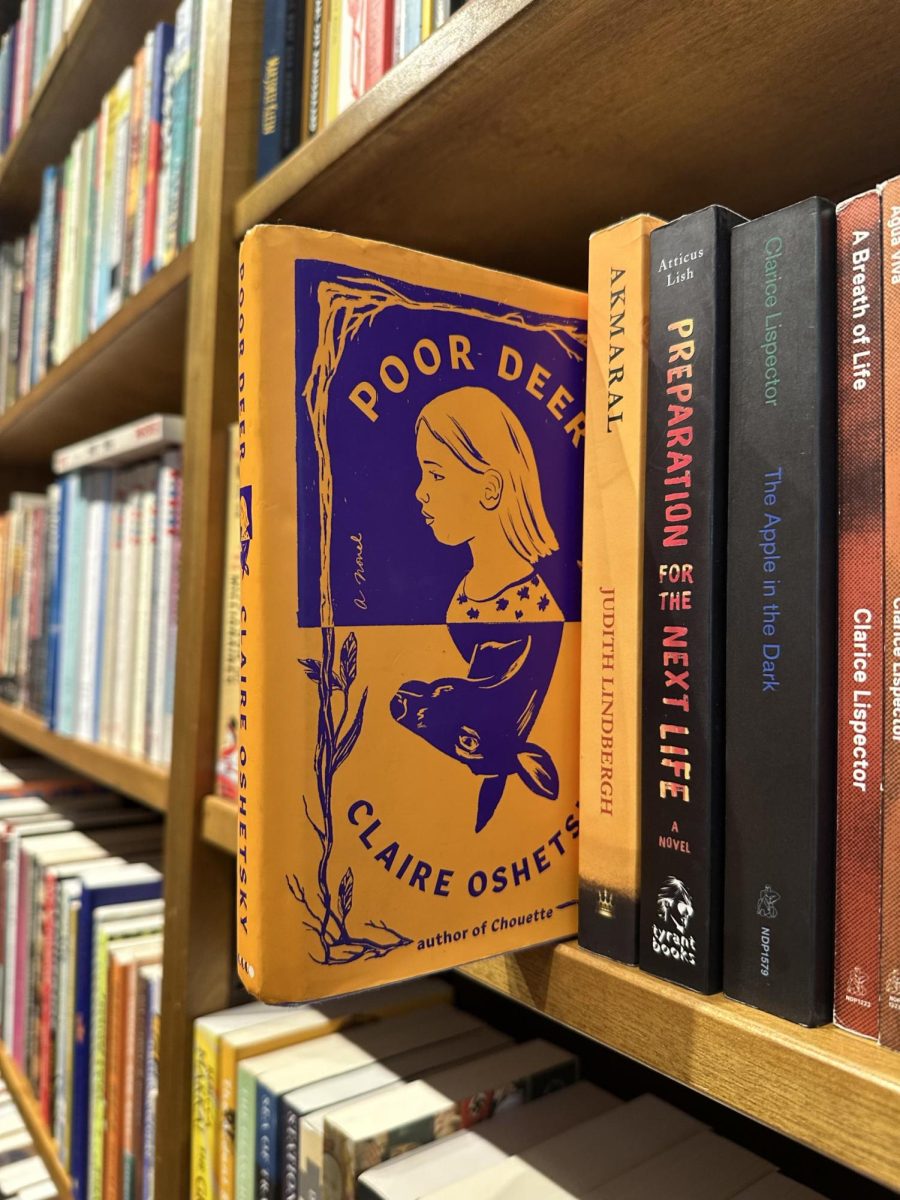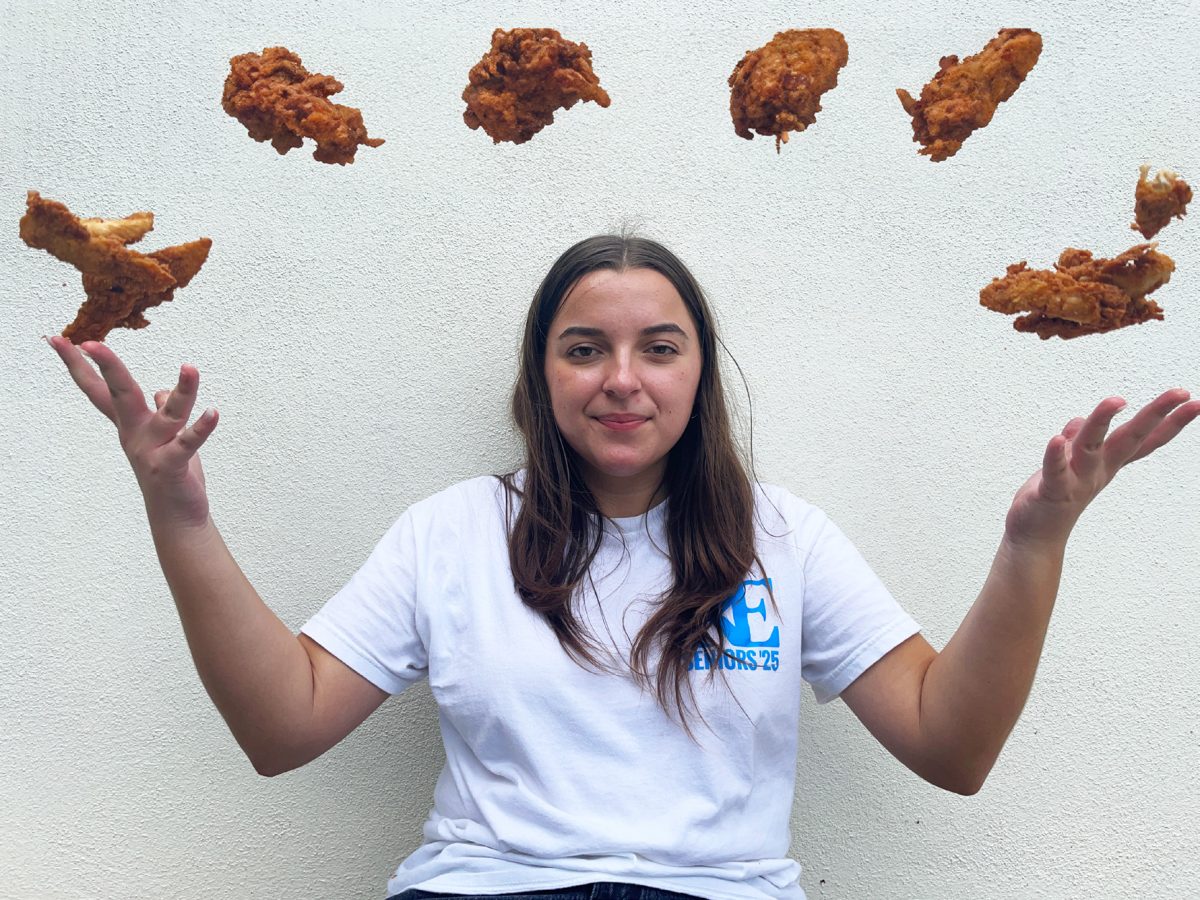In a world where TikTok’s own “Booktok” dictates what most teenagers read, I believe the art of going into your local bookstore and buying something you’ve never heard of before is a dying one. It’s also an art I personally refuse to let go of, partly because it led me to this book.
Claire Oshetsky’s “Poor Deer” is a meditation on repentance, flooded with recurring motifs and haunting symbols that accompany young Margaret Murphy into her teenage years. Margaret’s story unfolds in beautiful prose that caused my copy of this book to be drenched in the neon pink strips of my highlighter. When I finally reached the end, my fuchsia sharpie had faded to a soft pink.
“Poor Deer” tells the story of Murphy, a guilt-riddled four-year-old mourning the loss of her best friend, Agnes. Even though no one blames her for the tragedy, Margaret’s conscience comes to life in the form of “Poor Deer,” a creature that haunts her as she attempts to cope through denial. The deer follows Margaret through imaginative tales that intertwine with her traumatic reality, leaving it up to the reader to weed out the truth from her childlike illusions.
Young Margaret is an unusual child. Seemingly shy and often mistaken as stupid, Margaret’s inner discourse shows the complete opposite. She proves to carry very complex feelings, oddly prioritizing repetition, rituals and prayer in her life and dialogue. She describes the thoughts of her childhood with specific and seemingly unimportant details, sometimes in prayer, only for those details to become subtle foreshadowing to the tragedy that follows. Her inner dialogue reads as heartbreaking, more so because this retelling begins when Margaret is only four years old.
The novel explores two timelines: the present, where Margaret finds herself in a shared room in a motel at 16, and the past, which retells everything that led up to that moment. This allows for the reader to see exactly how the habits she picks up and the trauma she experiences in her childhood show up in her teenage life.
The story is narrated by Margaret herself, in a unique blend of first and third person:
“Margaret’s mother came striding into the room, carrying a laundry basket full of clothes-
Shut up with your lies before I shut you up for good!
Poor Deer’s eyes are full of rage at my betrayals.
She looks ready to strike me down.
Am I afraid of Poor Deer?
Yes.”
Pushed to narrate the story by Poor Deer, Margaret struggles to tell the truth sincerely. Her coping mechanism involves concealing the truth not only from others, but from herself. The book serves as a confession, a hopeful attempt at liberation from the burden she bears. Her character is revealed not just by her own actions, but by Poor Deer’s as well—a clever way that Oshetsky separates her feelings of innocence and search for normality from another side of her that feels guilt and impending doom.
The novel frames Margaret as a victim, not a perpetrator, even as she is facing the consequences of her own actions. Instead, the villain of the story is a personification of the ugly emotions that Margaret experiences. The “bad guy” in the novel is nothing but deep remorse from Margaret herself. This separation comes to be one of the most beautiful aspects of the book; it shows that even though guilt follows you and transforms as you grow older, emerging unexpectedly throughout life, you are not your guilt, and neither is Margaret.
Oshetsky somehow portrays the softness of innocence even while facing the loss of it. The book holds remnants of childhood everywhere, in its prose, form, and descriptions, almost eulogizing the childlike use of imagination that Margaret relies on to cope with her tragedies. Oshersky writes in a childlike train of thought, with shorter sentences and constant repetition. Even as Margaret comes to terms with reality, there is still a heartbreakingly innocent and childlike quality to her words.
Oshetsky’s “Poor Deer” feels like a pardoning in itself. The harshness of Poor Deer, paired with the beautifully detailed and childlike texture of Margaret’s narration, feels like a love letter to the vulnerability of childhood. Even in fault, Margaret’s search for forgiveness seems overly punishing. This is where the beauty of this book lies: in its ability to balance the raw weight of guilt and grief with the tender, imaginative resilience of a child’s mind. The exploration of guilt in “Poor Deer” feels like the absolution and healing of childhood wounds. It reminds us that the harshest part of grief can be forgiving yourself.







